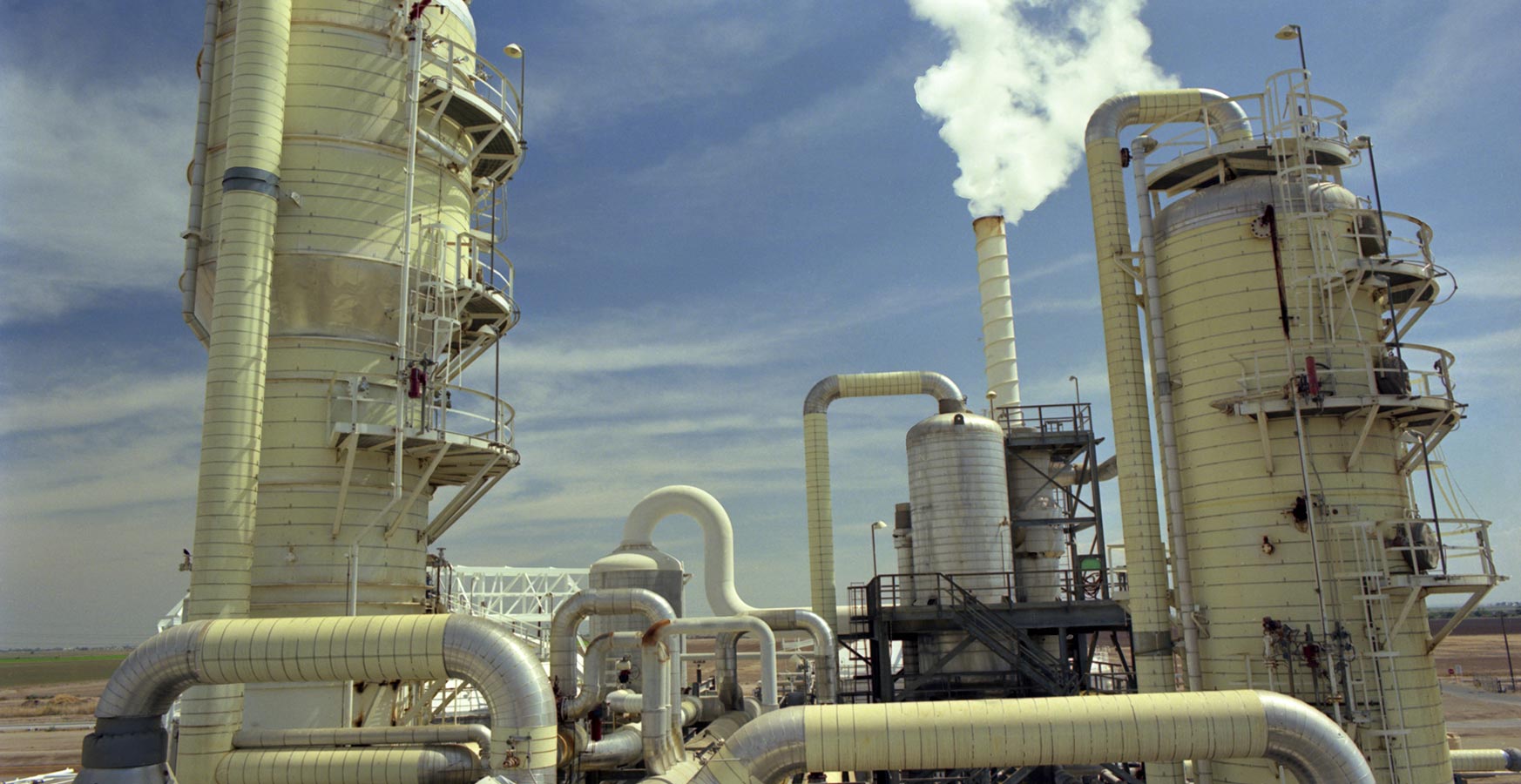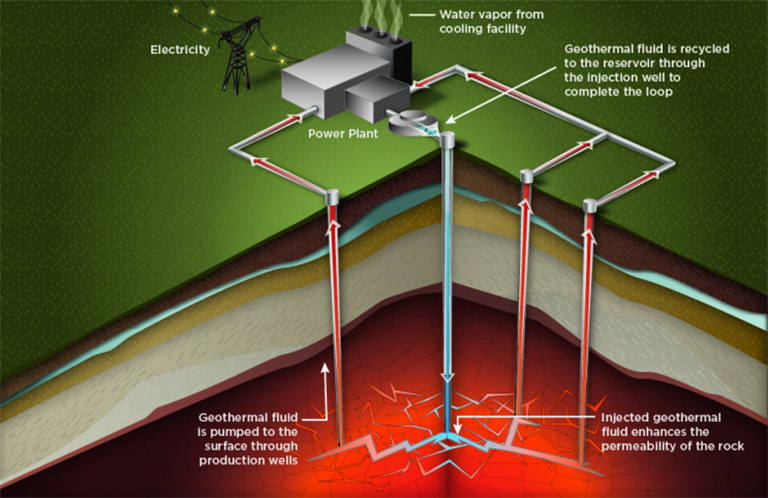Sedimentary and Enhanced Geothermal Systems
To increase the development and production of geothermal energy, NREL focuses its research and development on innovative technologies, such as sedimentary and enhanced geothermal systems (EGS).

Capabilities
To advance EGS and sedimentary geothermal systems, NREL has the following capabilities:
- Techno-economic modeling
- Expertise in data management, communications, and site operations for EGS
- Induced seismicity education and implementation
- Geothermal reservoir modeling.
Enhanced Geothermal Systems
Enhanced geothermal systems (EGS) are engineered reservoirs that can provide geothermal power from geothermal resources that were once considered unrecoverable due to lack of water, location, or rock type. NRELs expertise in geothermal research and development, techno-economic modeling, data management and communications, and site operations is contributing to the advancement and commercial-scale deployment of EGS.
The U.S. Geological Survey estimates that potentially 500,000 megawatts of EGS resource is available in the western United States—about half of the current installed electric power generating capacity in the United States. NREL and the Colorado School of Mines are working together under an award managed by Lawrence Berkeley National Laboratory to advance EGS technology by conducting simulations and flow tests in mine shafts approximately 1 mile underground at the Stanford Underground Research Facility in South Dakota. This project utilizes NREL's High Performance Computing System at the Energy Systems Integration Facility.

Induced Seismicity
NREL is working to help implement the U.S. Department of Energy's (DOE's) Induced Seismicity Protocol for projects on federal land—helping staff to understand the protocol, the details, and risks associated with EGS reservoir creation and proposed project applications. During EGS reservoir creation, rocks may slip along pre-existing fractures and produce microseismic events. These events, also known as induced seismicity, are a very useful diagnostic tool for accurately pinpointing where fractures are re-opened or created, and characterizing the extent of a reservoir.
To learn more, see NREL Helping the Bureau of Land Management Dive Further into Hot Water.
Sedimentary Geothermal Systems
NREL has been involved in a joint project with the Colorado School of Mines to study the technical and commercial feasibility of sedimentary geothermal systems through reservoir and techno-economic modeling. The study focused on the use of horizontal wells and fracturing techniques from the petroleum industry to increase the productivity of marginal reservoirs with low permeability. The project is focused on modeling a promising reservoir in the Lyons formation of the Wattenberg Field, just north of Denver.
Geothermal Reservoir Modeling
DOE's Geothermal Technologies Office supports geothermal reservoir simulation work at NREL. A geothermal reservoir model is composed of a 3-D static (structural) and a dynamic (numerical) simulation. In the past, NREL has subcontracted with the Colorado School of Mines to perform the numerical simulation tasks. Currently, NREL is establishing this capability in-house by subcontracting with the school to install reservoir simulation software onto NREL's High Performance Computing system.
We have expertise in sedimentary and enhanced geothermal systems.
Work with usShare
